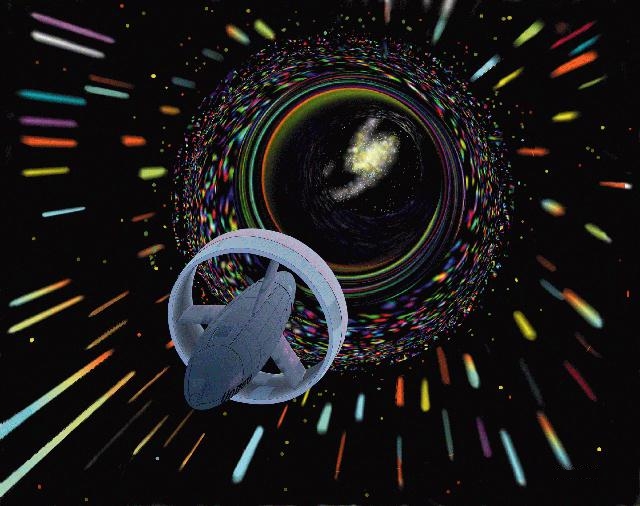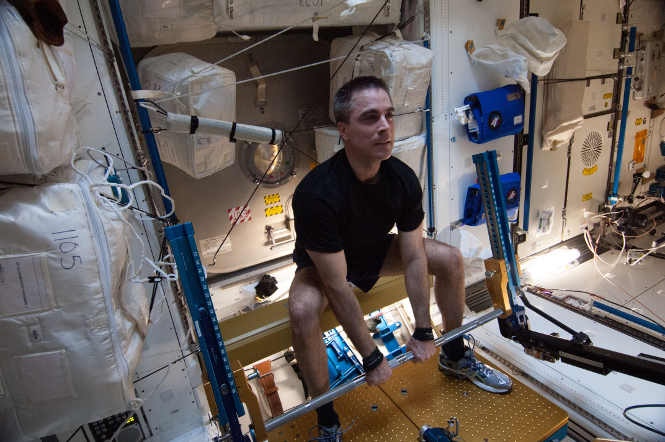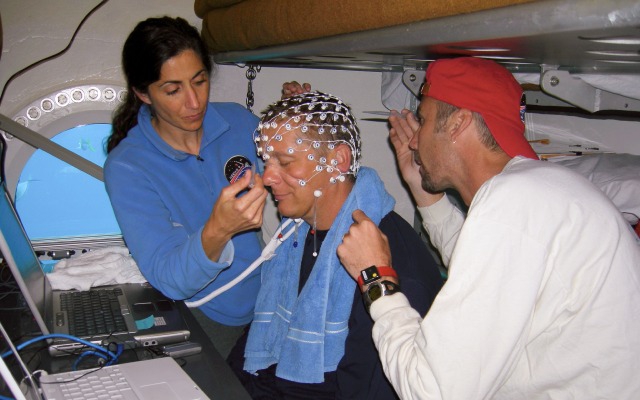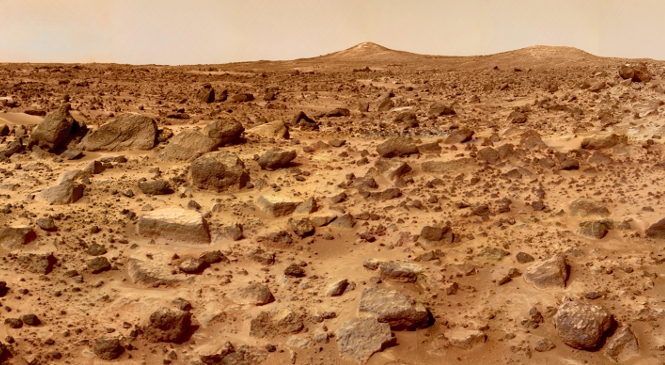Overcoming Challenges To Mars

We can’t stay on Terra Firma forever. The stars are calling. And it’s not just about adventure, exploration, and discovery. It’s about survival. Neil DeGrasse Tyson said it best when he said, “Asteroids are nature’s way of saying: ‘How’s that space program coming along?’ ”
But asteroids aren’t the only threat to our survival. Yellowstone National Park is a volcano and an overdue ticking time bomb. Coronal bursts from the sun aren’t exactly predictable. New and more dangerous plagues and super bugs are constantly threatening. And that’s just scratching the tip of the iceberg of the dangers humanity has to face in its constant struggle for survival. Although the human population is large and growing, it might not take much to undo that, and not in very pleasant ways. Nations have globe annihilating weapons pointed at each other and are just waiting to push the button.
Yoko Ono is still capable of releasing a new album.
We’re quite a way from traveling between star systems. Our current hope is within our own solar system. Luckily, Mars isn’t too far away. But it’s far enough away to create a plethora of problems in trying to get there. So do we currently have the solutions? A few weeks ago at Worldcon 74, I had the opportunity to sit in on a panel by NASA astronaut Stan Love about the difficulties in getting to Mars and back. And it got me thinking about possible solutions.
Ship and Propulsion
To start off, let’s talk about the ship. We’re not talking about some Soyuz capsule or Columbia class orbiter. It has to be a vessel made for long trips. I mean loooong trips! And there must be a brief colonization period while Earth and Mars align just right to send a ship out and back again. Using an orbital slingshot effect, which was standard practice when going to the moon, fuel for the chemical rockets can be minimized. But there’s also no margin for error. The slightest miscalculation or misexecution (which apparently wasn’t a word until just now) would result in nothing more than a lost ship and dead astronauts. In case you’re wondering, that’s not a good thing.
Of course, that wouldn’t be a problem using nuclear thermal propulsion. And like many nuclear reactors that were used in major universities and are used on a lot of ships in the U.S. Navy, the base isotopes are not dangerously radioactive, the harmful radiation occurring only once the reactor is switched on. So it’s safe to launch into space, right?
Well, not everyone understands the science. Doing so would invoke a major political backlash. Extremists on the far left have a hard time grasping that the reactor isn’t being used to poison the skies and the isotopes aren’t radioactive enough to cause any environmental problem if there is a disaster on liftoff. Extremists on the right would have the concern that the construct might be, you know, a weapon of some sort. And until the lawyers and business people who comprise the House of Representatives, being the ones who control the federal purse, are outside of such influence, the reactor propulsion system isn’t going to happen. So gravitational slingshots and even greater danger of failure it is!
But wait, what about the newly developed and state of the art Electromagnetic drives, or EM drives, that I keep hearing about in the media, the so-called “impossible drive”? Oh, you mean the one that’s only starting to be studied and nobody knows how it would perform on an actual vessel without lots of further testing? Yeah, great idea. But it needs, you know, lots of further testing. Although it shows a lot of promise, most of the rumors of progress and seemingly impossible feats (like making lasers exceed the light barrier) are just that: rumors.
Since we’re on the subject of hypothetical propulsion, let’s consider another possibility. What if a nuclear reactor was put on a vessel to power an Alcubierre drive? Although still theoretical, the math behind it has yet to be disproven. The Alcubierre drive is intended to be a real-world warp drive.
But to exceed the light barrier (if that is even possible with the drive) would require the use of antimatter. The longest antimatter has been held stable is 16 seconds, which is immensely longer than any previous record. And the amount was almost negligible. But what if a reactor was used? Sure, if it works, it would travel much less than 10% the speed of light. But it could possibly be faster than the chemical rockets used today and even more efficient. So is it practical in any way? The jury may be out on it, but it’s worth thinking about! Even more so if it can shorten a trip to and from Mars.

As fun as it might be to speculate as to how to get to Mars faster, the sad reality is that by current technology, it’s a bloody long trip. Being without gravity for so long can do nasty things to the human body. An artificial gravity system like those typically found in science fiction would be a wonderful thing. But coming up with such a system is difficult when so little is known about gravity.
There are three different theories (Relativity, Quantum Mechanics, and M-Theory/Superstring Theory), and all of them are completely different. It’s hard to apply something without even knowing what it is! So there has to be another way. Well, there has to be two different ways, to be exact.
The first is to completely ignore gravity altogether and have astronauts exercise on a daily basis. This is the current method of keeping the body intact on the International Space Station. Perhaps a bit inconvenient. But if it works, then it’s rather hard to complain too much.
The other is to replicate the effects of gravity through centrifugal force. That means the ship’s main body remains upright while the crew’s living area spins. This is the kind of thing one would see in movies like 2010 and, appropriately, The Martian. Just don’t get dizzy from staring out the window.
What’s On The Menu?
Then there’s the issue of feeding the space explorers. Packing sack lunches for a full crew on a long voyage isn’t so easy. There has to be months worth of storage for all of the astronauts. After all, in space, you can order as many pizzas as you want, but they’re not going to deliver.
And it’s not like you can grow food that easily. The light needed would exceed anything that the ship’s systems or solar panels could provide. While a nuclear reactor powering the ship could solve that problem, the likelihood of that kind of power being used is slim. So what could be grown? Is all hope lost?
One would have to use the fact that there’s not enough light to one’s advantage. That means growing food that requires little to no light. As was seen in The Martian, the main character grew potatoes in the crew’s stored dung. While that might be a crap way of doing things, it can be quite effective.
Then there’s the possibility of a high protein source. Mushrooms require no light, just a damp enclosure with nutrients. That means shiitake mushrooms could make it onto the menu. When cooked right, they can have a similar taste and texture to meat, and provide a higher concentration of complete proteins than steak.

And if there can be salt water bins (even though it might take up too much room and over-complicate setup before launch because of it), perhaps they could grow dulse. Dulse is a red algae seaweed that is said to be healthier than kale. One strain of dulse being grown at Oregon State University is supposed to even taste like bacon when fried up.
Now, with a nuclear reactor, there would be enough energy to “greenhouse” various food plants. But if one can’t be used, all hope is not lost. In fact, it might not exactly be steak and potatoes, but it would sure come close. Now that’s some good eats, at least by space standards.
Health and Fitness
Finally, there’s the general health and wellness of the crew to figure out. Right now, the only way to combat the negative effects of weightlessness is constant exercise. Without it, there would be muscular atrophy and osteoporosis due to the muscles and bones not having the benefit of normal use. And there’s little to no way to maintain full physical monitoring until astronauts are back on Earth. Throw in the mental psychosis, and you have an overall medical nightmare!
But then again, just as so many other solutions found by the space program, overcoming those obstacles can have much greater benefits to all of humanity than just space flights.
First of all, there’s the physical exercise issue. Electrostimulation to prevent atrophy might be good, but it’s far from ideal. Providing an artificial gravity should solve that problem, even if it’s just spinning the crew compartments. But having a gym of some sort is still a good idea, if not imperative. The difficult task is finding ways to exercise as much of the body as possible as thoroughly as possible in as little space (no pun intended) as possible. Luckily there are a lot of multi-gyms marketed for use in the home. I’ll leave it to the NASA eggheads to decide which is best.

But how does one monitor the overall health of an astronaut from such a distance? Imagine being able to conduct a physical examination on an astronaut in deep space while still on Earth. There are automated blood pressure cuffs which can be found in drugstores and even in some doctor’s offices. It can give information on both blood pressure and heart rate. There are devices for checking vision, blood saturation levels, temperature, and much more.
By using piezo microphones, one can listen to heartbeats, breathing, and gastric sounds. Small cameras can be used to look at the ears and nose and so on. So observation and auscultation can be covered. All that are lacking are palpation and percussion. Perhaps something like ultrasound can check inner organs without palpation.
So a doctor wouldn’t have to be in the same room as a patient to conduct a head-to-toe physical assessment. That means an exam could be performed on a patient in quarantine, or even with a doctor in another part of the world. By sending the data as a package, it could even be done on an astronaut with doctors on Earth. It would be a 20 minute delay using current technology. Then after review by a doctor, a further set of test requests can be sent back for needed follow-ups.
Then there’s one more health issue that must be addressed. That is the subject of mental health. Put a handful of people, even trained professionals, for an isolated trip through space, and you have the perfect setup for murder. The issue becomes dealing with potential psychosis from that isolation. Phone calls to friends and family are out of the question with nearly a half hour delay. Using Facebook or YouTube to pass the time are also a bit of an issue. So other than having a library of movies, books, and video games already on board, there isn’t much escape from the isolation. So what can be done to keep those with the “right stuff” from going lethally coo-coo?
One possibility would be to try to send communications faster than light. This is a difficult task given things like the freaking laws of physics. Luckily, quantum mechanics may hold an answer that relativity doesn’t provide. That possibility is quantum entanglement. Although the jury is still out on it, some think that entanglement could transmit information instantaneously. It is to my understanding that the Chinese plan to launch a satellite within the next couple of years to test entanglement communication between China and Tibet. We’ll see how that goes. If communication could be instantaneous, then important matters can be attended to such as mission control monitoring, real time updating of critical systems, and updating Snapchat.
Another more likely option would be better training to deal with psychological stress. Different states of mind translate to different brain frequencies. By training those frequencies with electroencephalography (EEG) much like one can exercise a muscle, one can become more relaxed and focused, and more resistant to the negative effects of isolation psychosis. And when EEG headsets cost as little as $79 (approximately $22,135 in government dollars), it’s a solution that is actually affordable and doesn’t challenge the known laws of nature.
What’s even better is that it has uses well beyond keeping astronauts sane. Mind frequency training can be used by ordinary people to learn and master skills faster. It can be used for therapy and relaxation, especially for those with issues relaxing who need guidance. It can be used by children and adults who are dealing with trauma or abuse to not only gain strength but also make it easier to open up in therapy. But for the purposes of this article, we’ll keep astronauts from going off the deep end.

Conclusion
Getting to Mars is loaded with challenges. Overcoming those challenges won’t be easy … or cheap. But in the long run, it might just be worth it. After all, we can’t stay planted on Earth forever. Granted, there are issues not discussed here … like colonization. But we still need to get there first. One step at a time.
![]()





Great article here. It’s always fun to look at how we can go to Mars. Thing is, we CAN go to Mars. We have the technology. The only thing standing in our way is cold, hard cash. Without proper, long term government support (it would be even better if it was support from multiple governments) we will never get to Mars or any extra-planetary colonization.
There’s no solid plan in place, merely a stack of ideas. It’s more than just funding, though that is also an issue. As difficult as it was to bring the world together to build the ISS, it will be difficult to bring multiple agencies to go to Mars. Not as difficult of a sell, but difficult to reallocate resources with so much being invested in the space station. The hardest part isn’t even getting agencies together, but to sell them on Mars being a high priority. Most are investing elsewhere.